The Pre-Raphaelites: an introduction
Read Now >

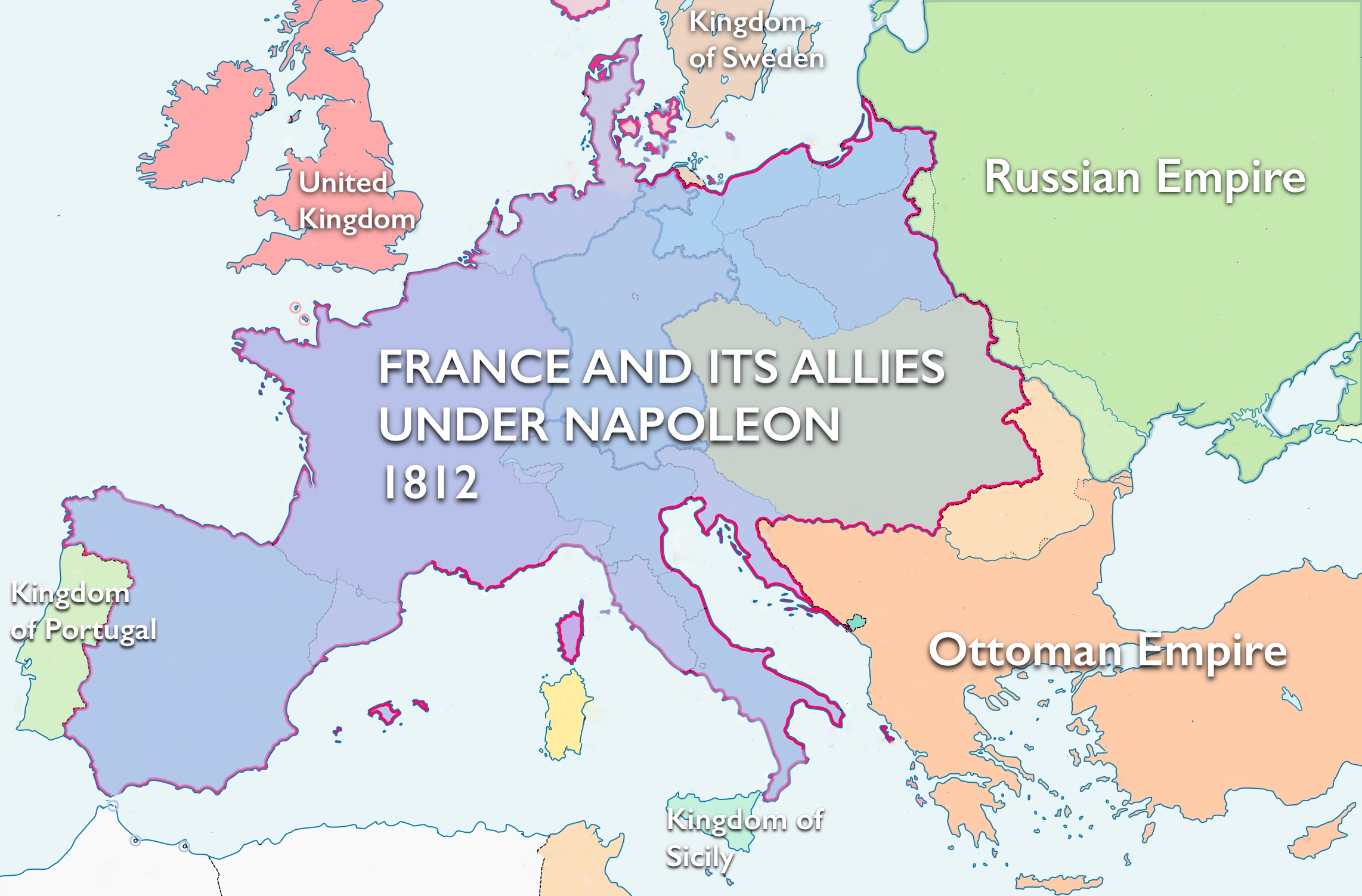
Europe in 1812 (adapted from Alexander Altenhof, CC BY-SA 3.0)
At the end of the eighteenth century, the French Revolution overthrew the French monarchy and, after a violent revolutionary period, established a short-lived republic. In the wake of the revolution, Napoleon Bonaparte, a military leader, rose to power and became the Emperor of the French in 1804 and, until his defeat at Waterloo in 1815, used his armies to enforce French dominion in Europe and beyond.
The French Revolution and the Napoleonic Wars cast a long shadow over Europe in the 19th century. After facing the rise of the charismatic autocratic Napoleon, and the prospect of conquest by a foreign power, many artists across Europe began to explore their individual gifts. As a consequence, the Romantic movement witnessed the growth of the concept of the “original genius,” the notion that some people possessed singular, titanic imaginative and creative powers. Other artists began to explore what qualities made their own nations special and investigated their national histories. In countries like England and Germany, for example, a fashion for art and design inspired by the earlier medieval world took hold. Other artists looked beyond their own countries and explored more distant areas such as modern Greece, which was then fighting for independence from the domination of the Ottoman Empire. Others went further afield to North Africa and West Asia—a world they called the “Orient.” These journeys, whether literal or in the imaginations of the artists, are the subject of this chapter.
In the early decades of the nineteenth century, artists and architects incorporated aspects of the Gothic, or medieval, styles into their work because they viewed these earlier traditions as an authentic expression of their national identities. Like many things in the nineteenth century, this fascination with what we often call “medievalism” began in the eighteenth century in England and Germany. Later on, in the nineteenth century, groups of artists in both countries—the Nazarenes from Germany and the Pre-Raphaelite Brotherhood in England—worked in their versions of a medieval or early Renaissance style.
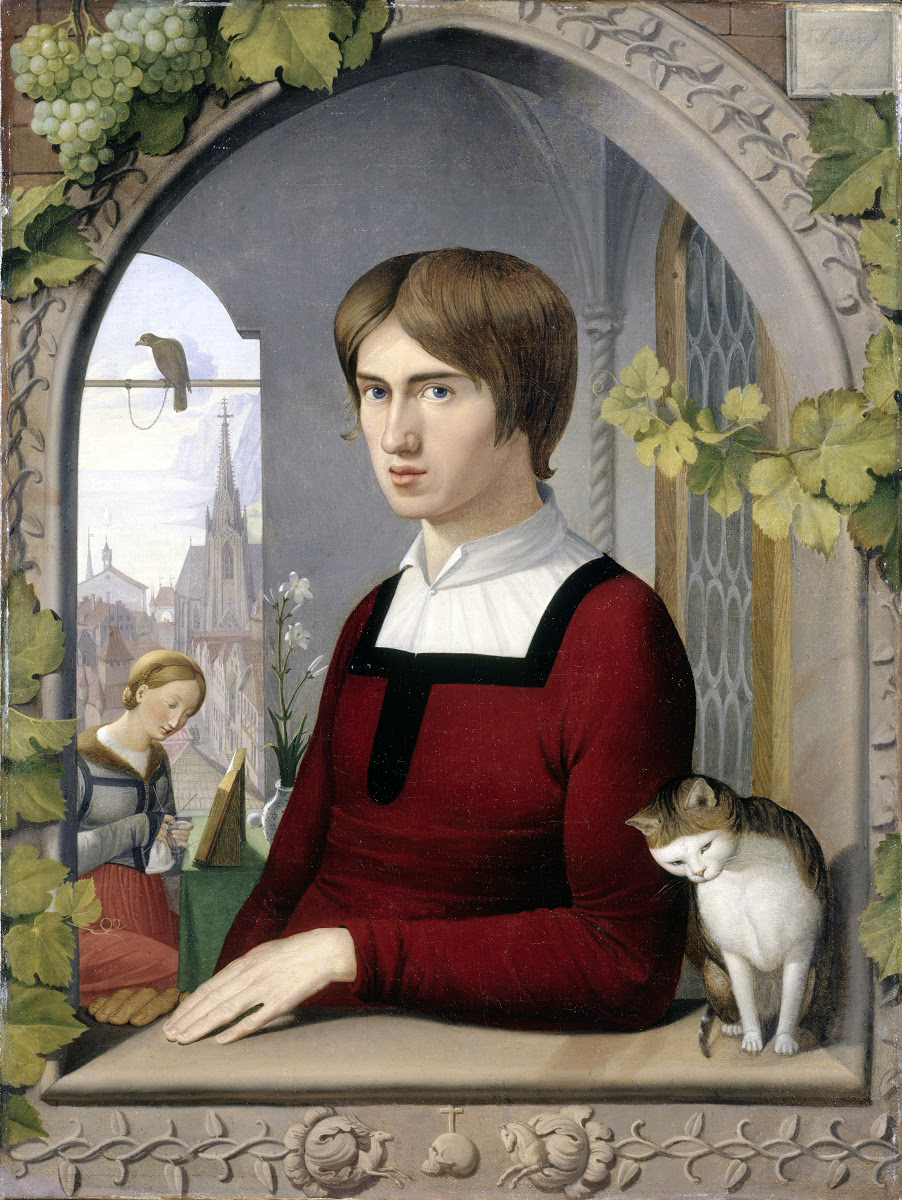
Frierich Overbeck, Portrait of the Painter Franz Pforr, 1810, oil on canvas, 47 x 62 cm (Alte Nationalgalerie, Staatliche Museen zu Berlin)
The German Nazarenes, like Friedrich Overbeck and Franz Pforr, rejected the style of the “High Renaissance” (embraced by France and Italy) and turned to artists that predated Raphael for what they viewed as a simpler, more sincere approach to making art. Friedrich Overbeck’s Portrait of the Painter Franz Pforr with its clear contour lines and medievalized costume and setting expresses the Nazarene approach. The example of the Nazarenes had a clear impact on the English Pre-Raphaelite painters who followed in the mid-nineteenth century. Those English painters, as well as architects and designers, found an antidote to the increasing industrialization of Britain by turning back to the past when objects were all handmade and, in their view, imbued with sentiment. All of these influences came together in the design and interior decoration of the Houses of Parliament, rebuilt after the fire of 1834.
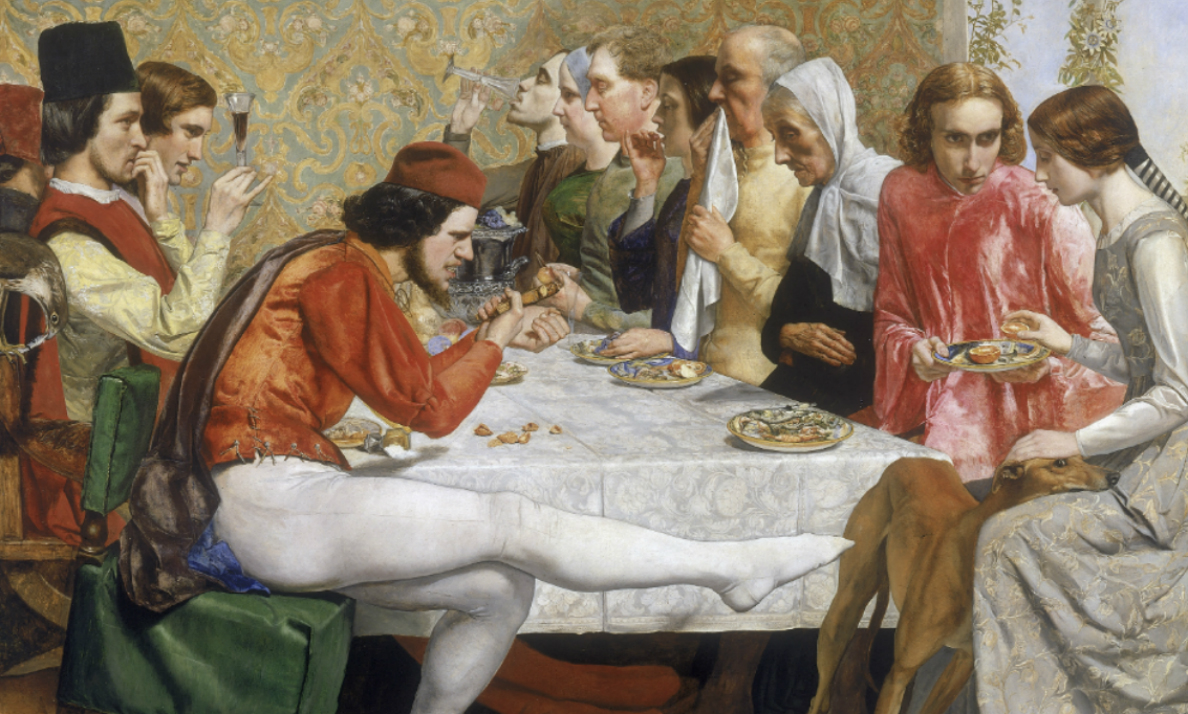
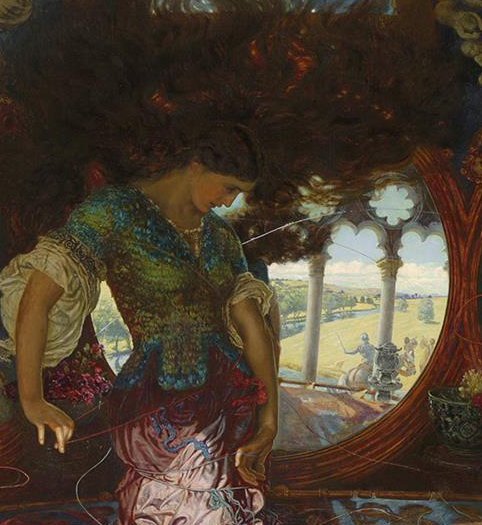
William Holman Hunt, The Lady of Shalott: The Victorians loved nothing better than a beautiful, tragic heroine, preferably one in medieval clothing, which explains their enduring fascination with Tennyson’s The Lady of Shalott.
Read Now >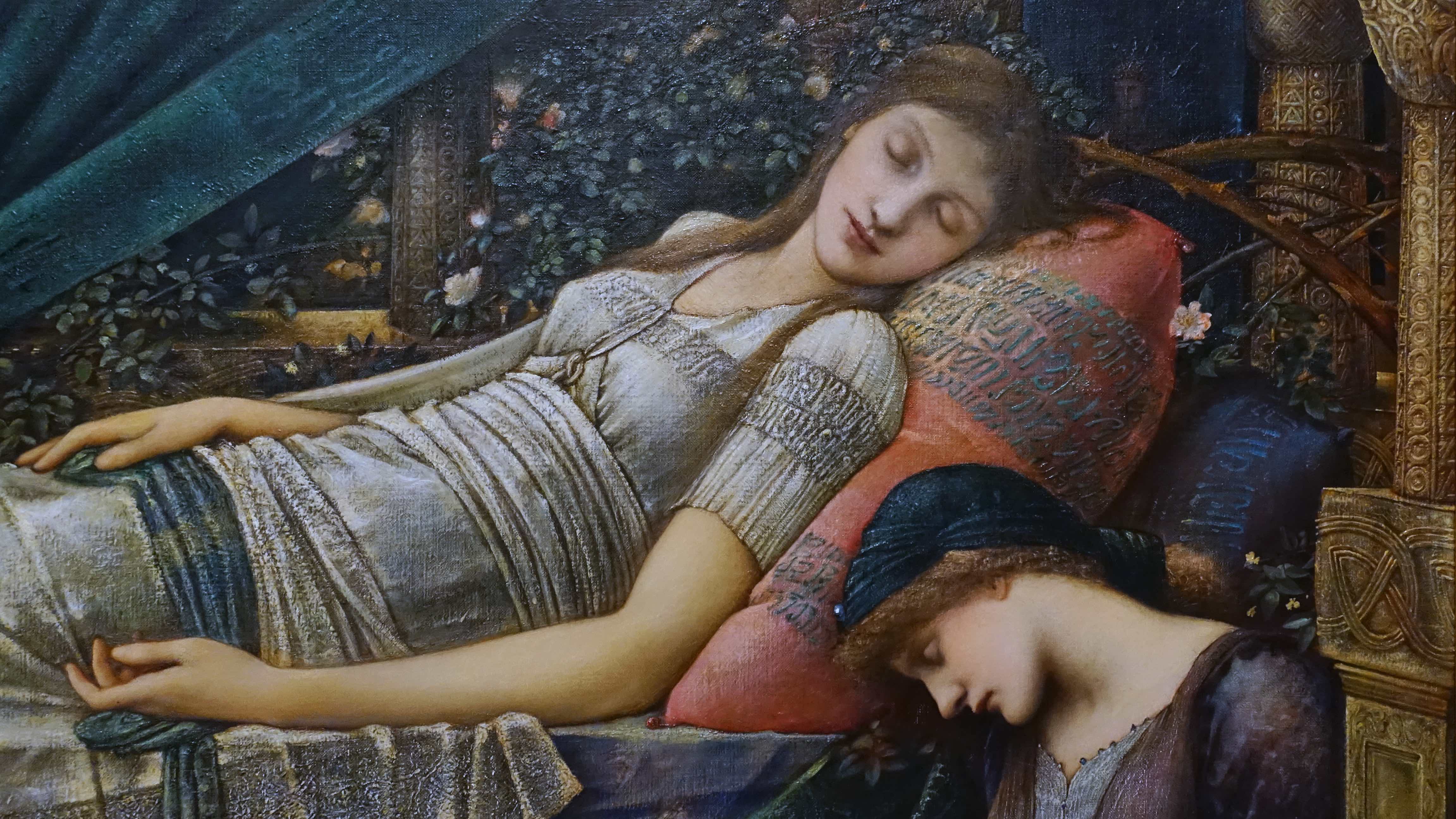
Edward Burne-Jones, The Briar Rose: A princess falls under a spell and sleeps for a hundred years—but Burne-Jones never shows us the kiss that awakens her.
Read Now >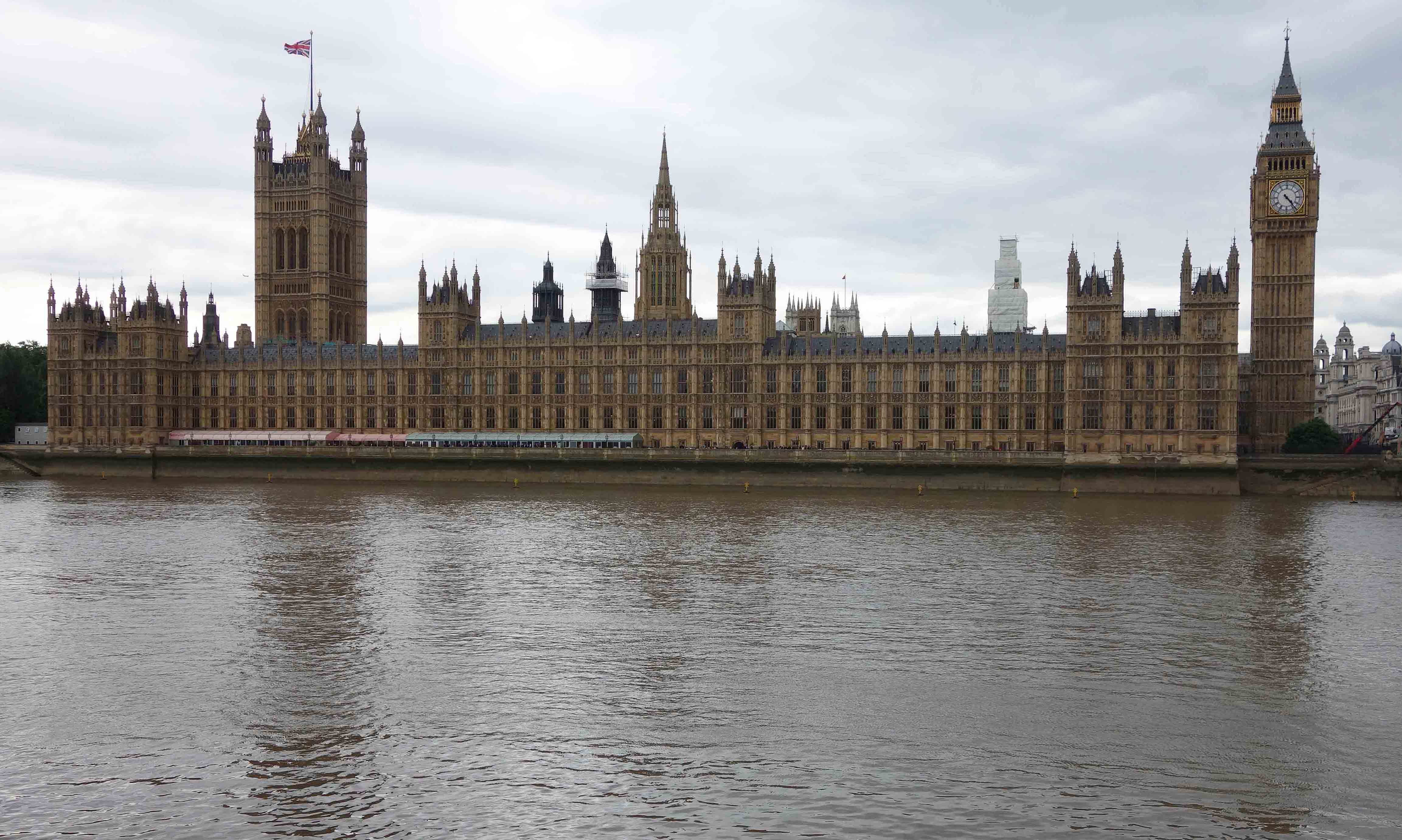
Charles Barry and A.W.N. Pugin, Palace of Westminster (Houses of Parliament): Unsettled by industrialization and the ugliness of the modern world, Victorians looked back to the Gothic style.
Read Now >/4 Completed
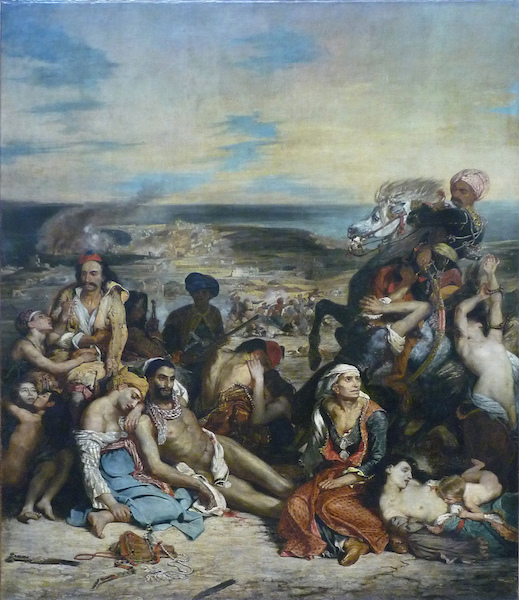
Eugène Delacroix, Scene of the massacre at Chios, 1824 Salon, oil on canvas, 164 × 139 inches (419 cm × 354 cm) (Musée du Louvre, Paris)
One artist who turned to subjects from the world of West Asia and North Africa early in his career was the French artist, Eugène Delacroix. Although many today are familiar with the iconic Liberty Leading the People, Delacroix’s early success rested on his paintings depicting the struggle of the Greeks for freedom from the domination of the Ottoman Empire. Many European artists and others identified the modern Greeks with ancient Athens and their democracy. The ancient classical world of the Greeks and Romans was already the subject of fascination, and had inspired a revival known as Neoclassicism in the late 18th century. People followed the events in Greece closely and took an even greater interest when the English poet and celebrity, Lord Byron, traveled to Greece to join the fight. While Delacroix never visited Greece, the revolution offered him exciting and meaningful subjects rooted in current events.
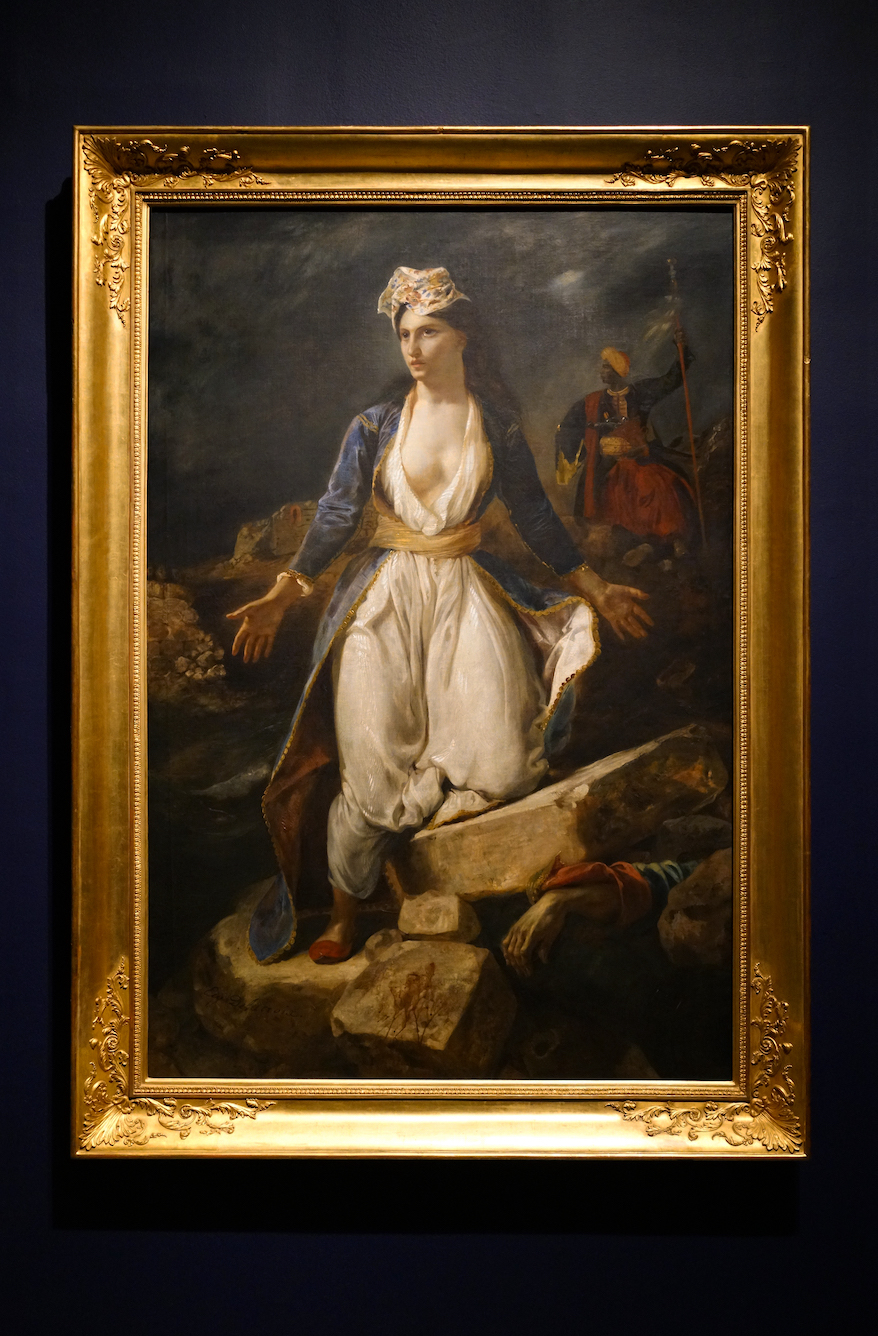
Eugène Delacroix, Greece on the Ruins of Missolonghi, 1826, oil on canvas, 208 cm × 147 cm (Musée des Beaux-Arts de Bordeaux; photo: Steven Zucker, CC BY-NC-SA 2.0)
Two of Delacroix’s paintings on the subject, Scene of the Massacre at Chios and Greece on the Ruins of Missolonghi—both created for the Paris Salon exhibitions—presented the viewer with Delacroix’s take on real world events, as had Gericault’s Raft of the Medusa. Delacroix took the subject of his next major painting, The Death of Sardanapalus, from a poetic drama by Lord Byron about the brutal ancient Assyrian ruler, Sardanapalus.
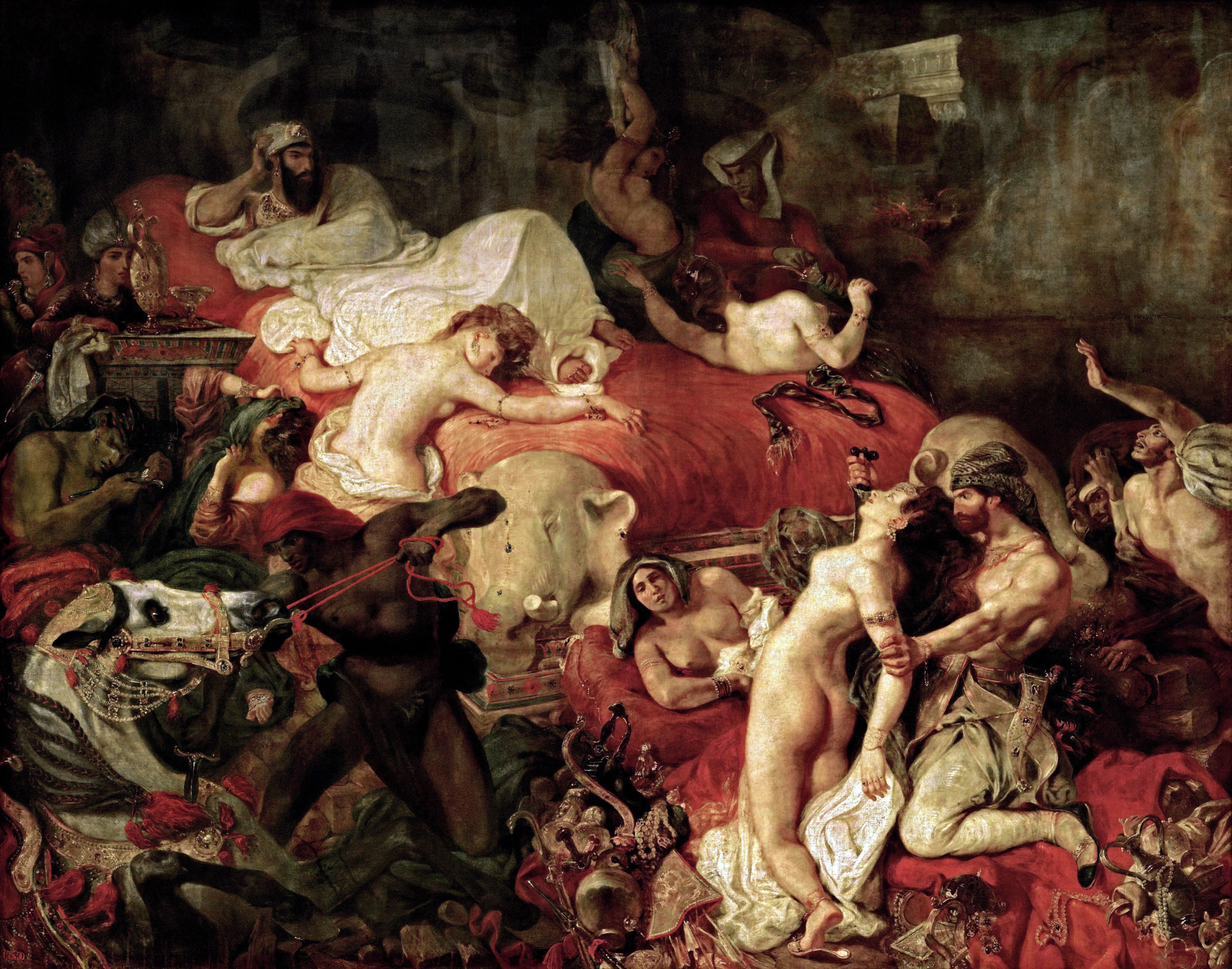
Eugène Delacroix, The Death of Sardanapalus, 1827, oil on canvas, 12 ft 10 in x 16 ft 3 in. (3.92 x 4.96m) (Musée du Louvre, Paris)
This highly dramatic painting was an example of what writer Edward Said called Orientalism. For Edward Said, and for Europeans of the nineteenth century, the “Oriental” world encompassed East and West Asia and North Africa—all areas that experienced European dominion at some point in their histories. It was above all, a world created by European imaginations that often tells us more about the Western artist and his or her audience. While The Death of Sardanapalus was fantasy, Delacroix did leave Europe and travel to North Africa where he encountered entirely new places and cultures.
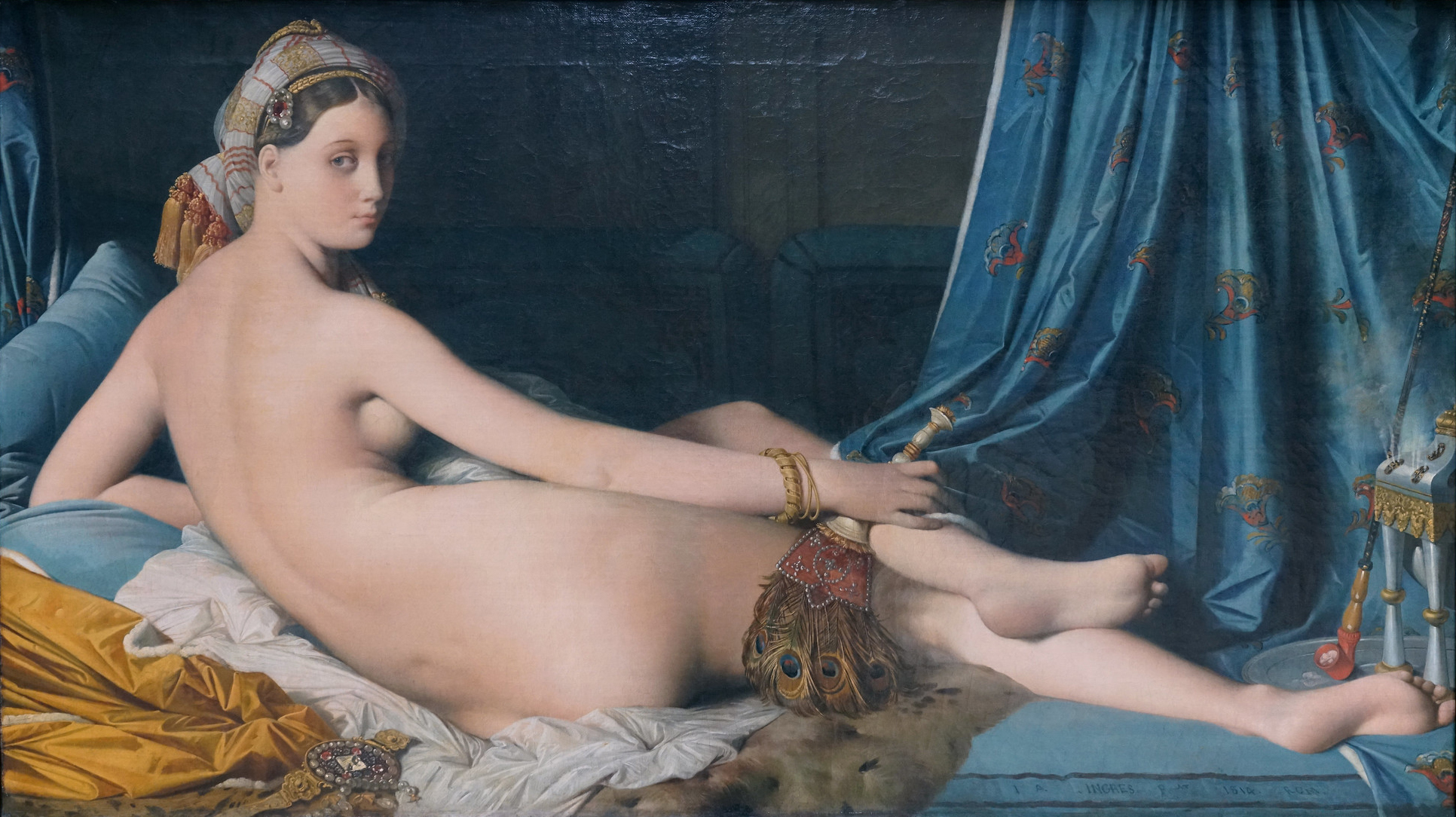
Jean-Auguste-Dominique Ingres, La Grande Odalisque, 1814, oil on canvas, 91 x 162 cm (Louvre, Paris; photo: Steven Zucker, CC BY-NC-SA 2.0)
Other European artists, like Delacroix’s contemporary Jean-Auguste-Dominique Ingres for example, had explored the private world of the harem based upon their imaginations, but Delacroix was among the first to depict women in a harem based, reputedly, on actual observation.

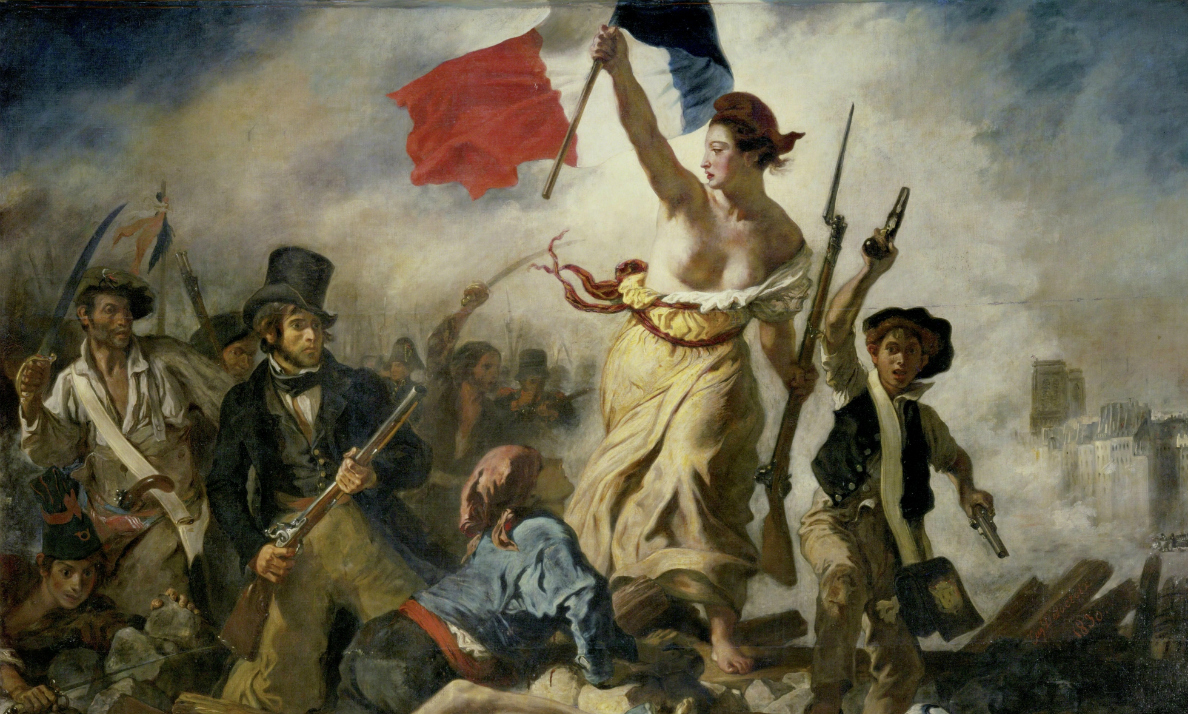
Eugène Delacroix, Liberty Leading the People: This uprising of 1830 was the historical prelude to the June Rebellion of 1832, an event featured in Victor Hugo’s famous novel, Les Misérables (1862).
Read Now >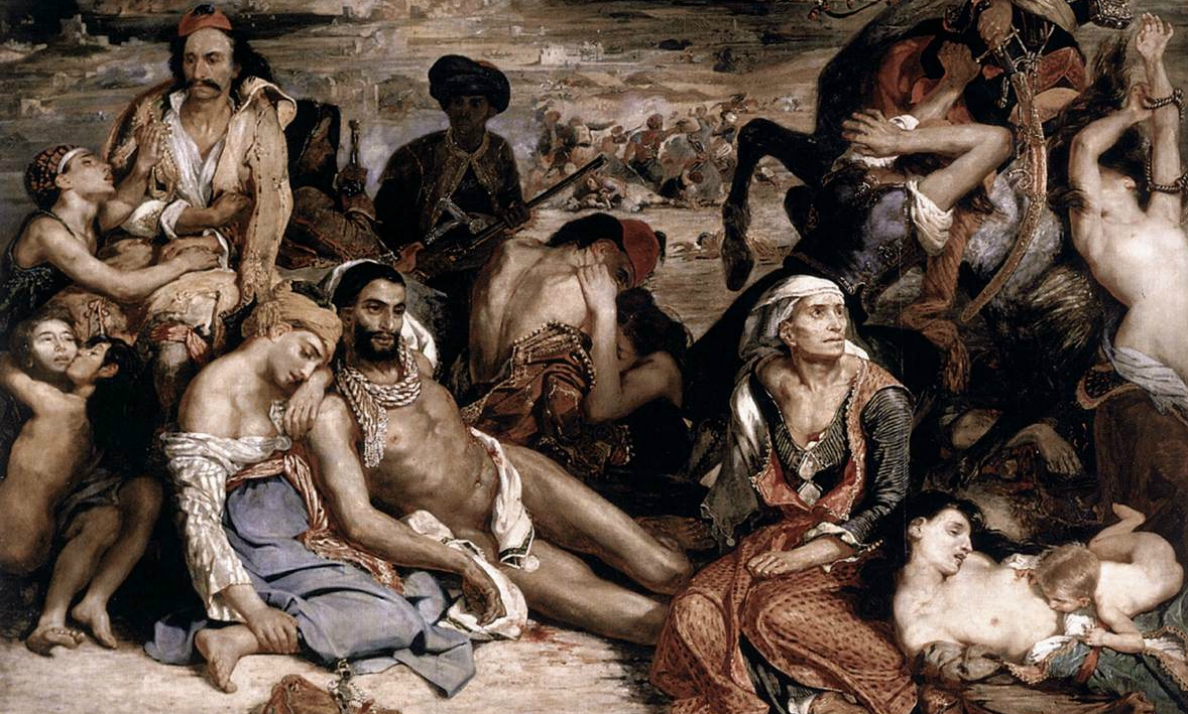
Eugène Delacroix, Scene of the Massacre at Chios:Delacroix’s scene of Greek survivors is anything but heroic and offers no relief to the suffering depicted.
Read Now >
Eugène Delacroix, Greece on the Ruins of Missolonghi: Delacroix’s painting is about much more than the Greek War for Independence—it is a universal statement about the cost of war.
Read Now >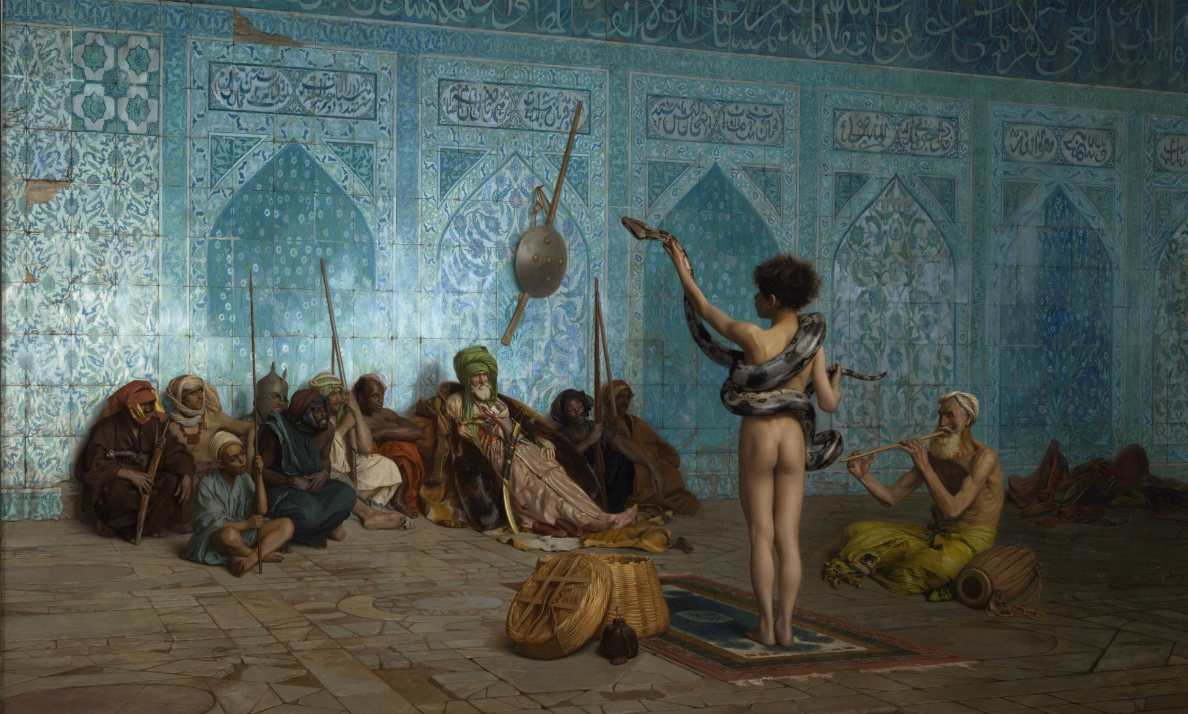
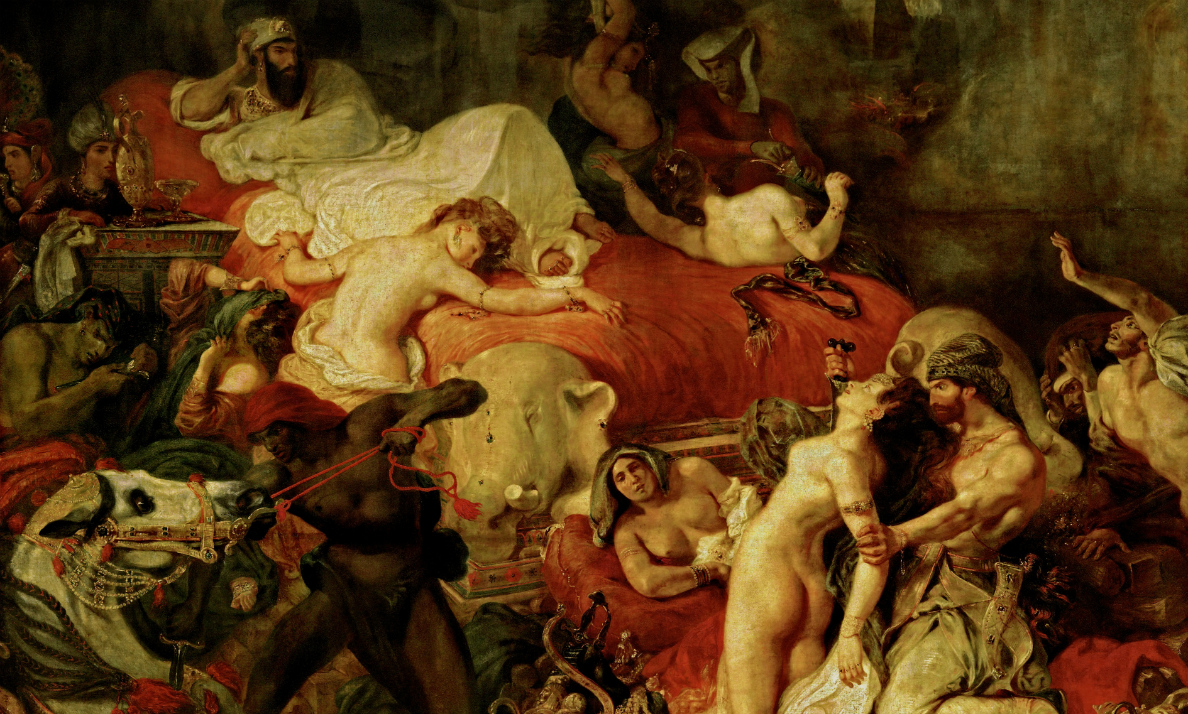
Eugène Delacroix, The Death of Sardanapalus:Delacroix paints an anti-hero who presides over a chaotic, violent scene of corruption and luxury.
Read Now >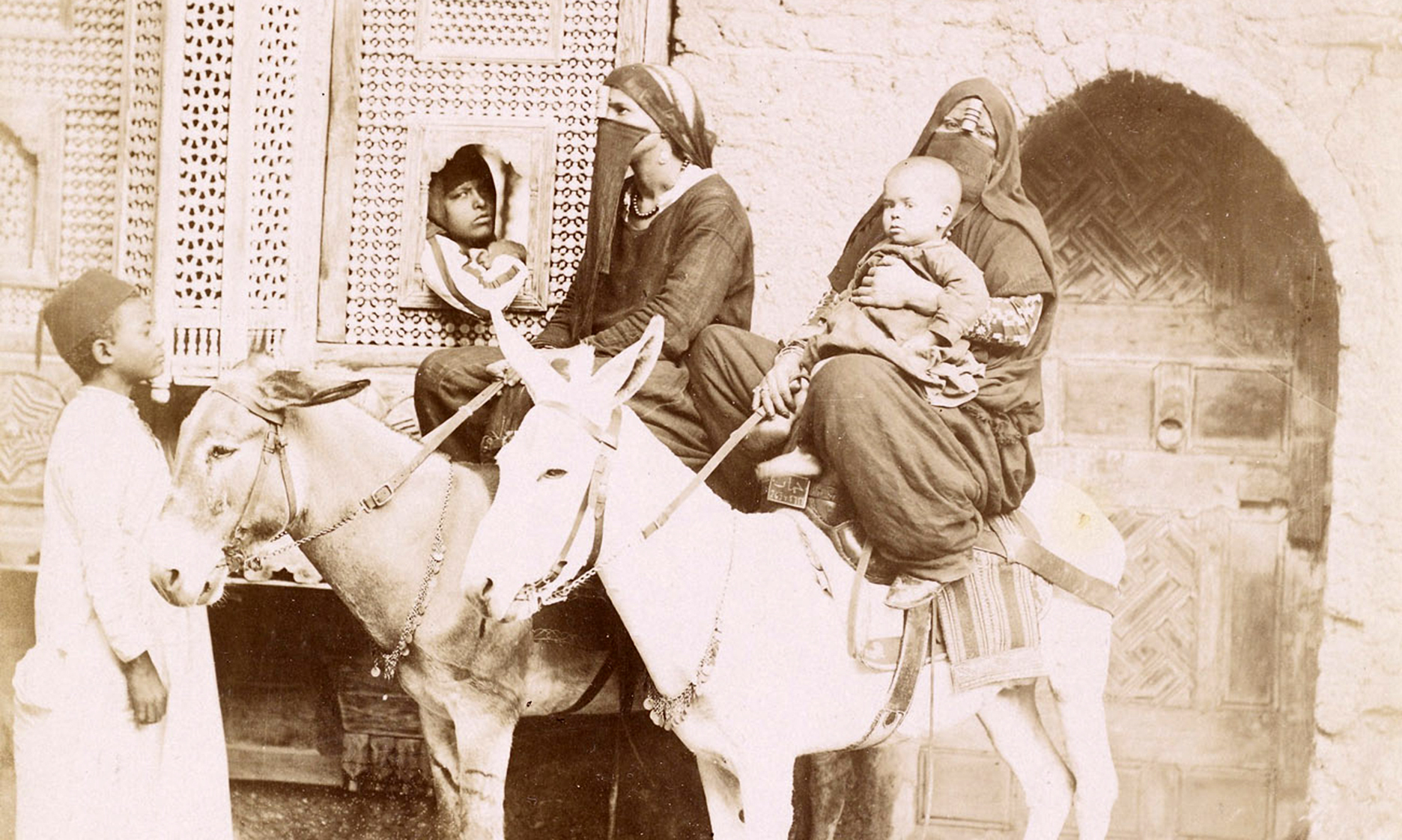
Staging the Egyptian Harem for Western Eyes: Fantasies of harem life existed for painters and photographers alike.
Read Now >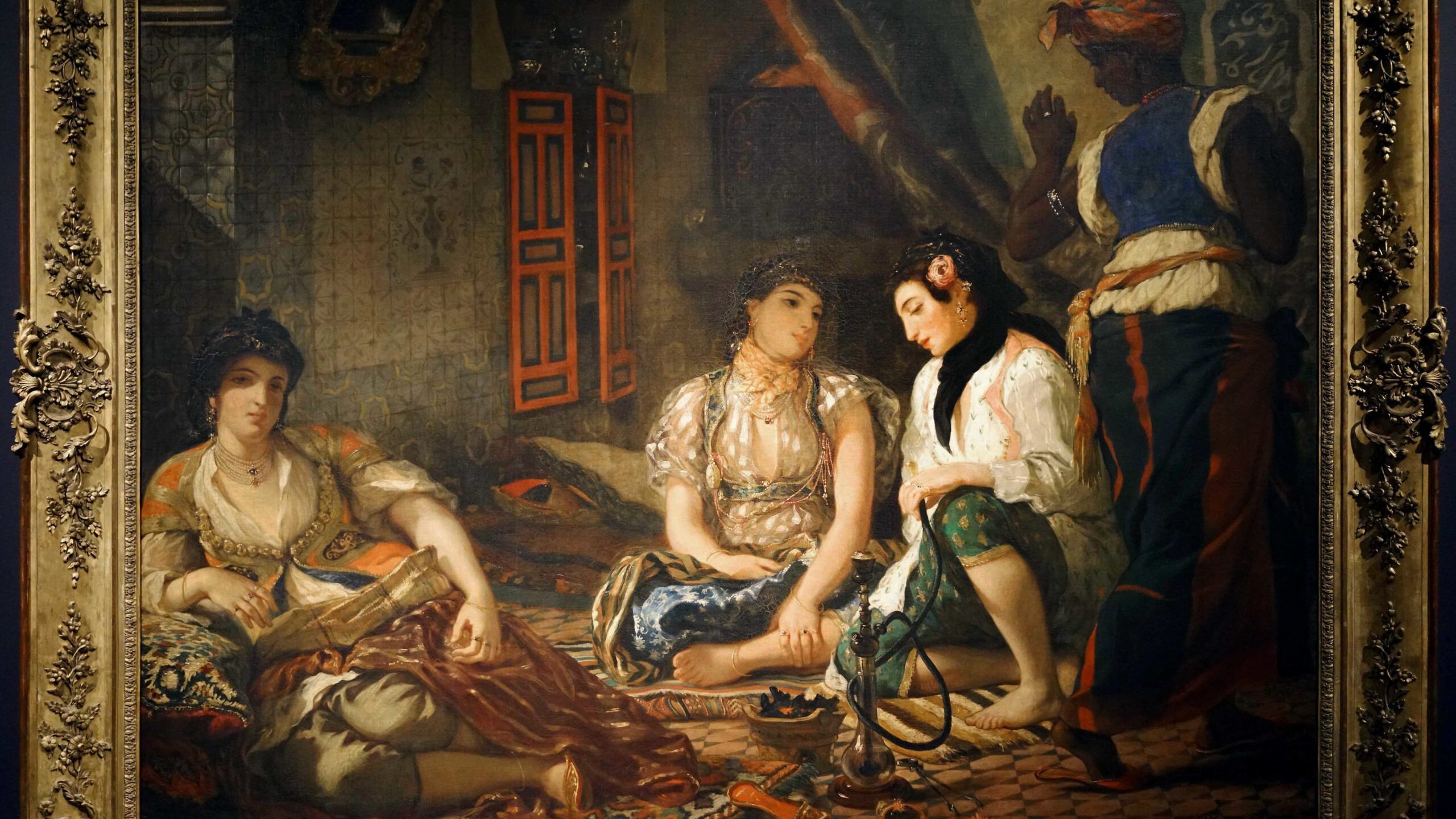
Delacroix, Women of Algiers in Their Apartment: Delacroix’s orientalist fantasy exhibited to great acclaim in the Paris Salon.
Read Now >/8 Completed
The beautiful “liquid light” of Morocco turned Delacroix’s head and throughout his life he remained attached to his time there. Others, like Henri Matisse for example, would follow Delacroix’s journey to North Africa to find new subjects for their art. One contemporary, the English painter J.M.W. Turner saw a bleaker reality when his thoughts turned to Africa.
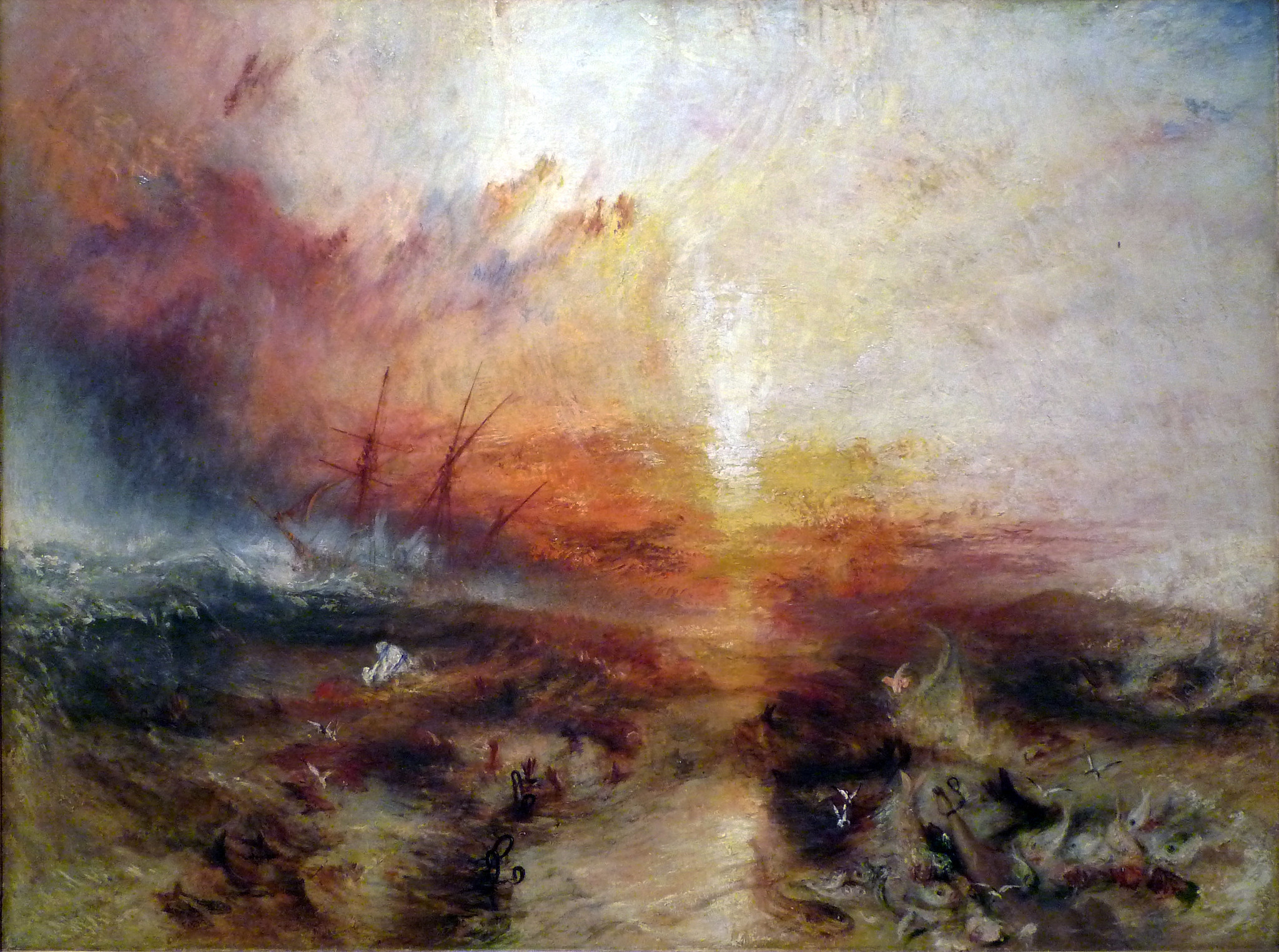
Joseph Mallord William Turner, Slave Ship (Slavers Throwing Overboard the Dead and Dying, Typhoon Coming On), 1840, oil on canvas, 90.8 x 122.6 cm (Museum of Fine Arts, Boston)
In Slave Ship (Slavers Throwing Overboard the Dead and Dying, Typhoon Coming On) discussed below, he commented on slavery which, while widely outlawed in Europe, was still practiced elsewhere. Instead of the violent fantasies of the Death of Sardanapalus or elegant women in their Algerian chambers, Turner depicted shackled slaves drowning in the ocean. The painting was based on earlier events, but as this video explains, commented on the harsh realities that still faced so many.
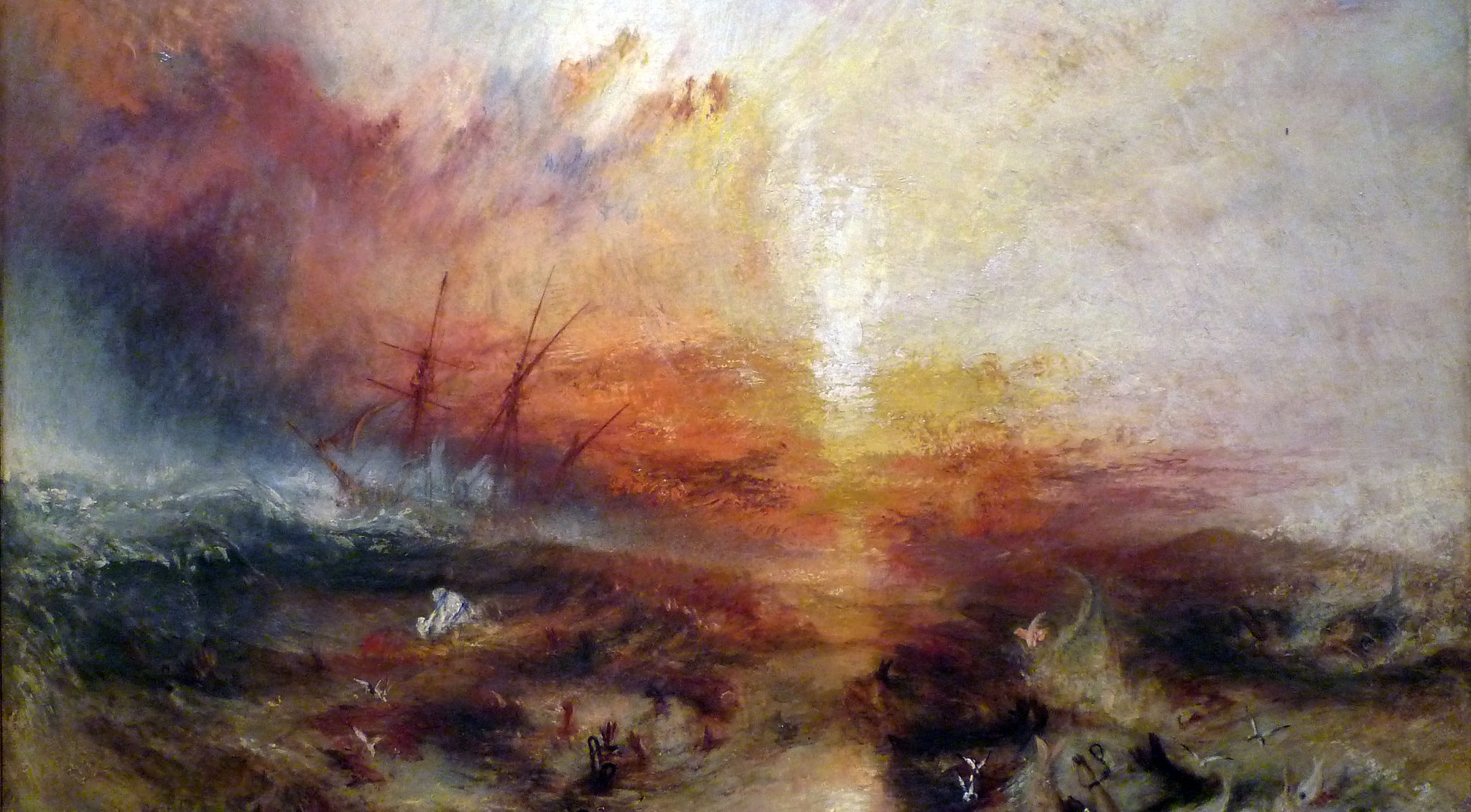
J. M. W. Turner, Slave Ship: A sunset paired with one of humanity’s most hideous acts seen in the waves of the indifferent sea.
Read Now >/1 Completed
While some artists journeyed to foreign places, in reality or in their imaginations, the nations of Europe were also changing as people came from the countryside into the cities to live and work. The growth of factories created a nostalgia for a simpler way of life in the country. Immigrants from European colonies began to arrive and take their place in the cities of Europe as well.
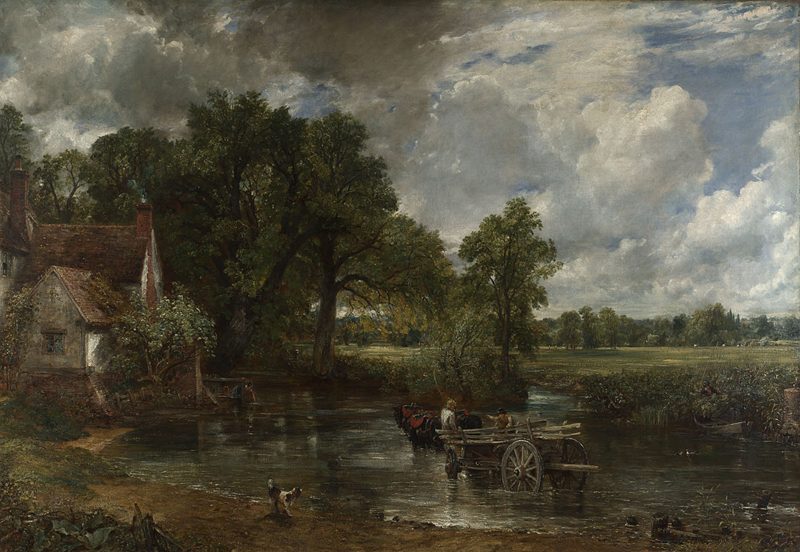
John Constable, The Hay Wain, 1821, oil on canvas, 51–1/4 x 73″ (National Gallery of Art, London)
In England, the painter John Constable marked the growth of industry in his “six-footers”—large scale landscapes that depicted a quickly vanishing way of life in the countryside as people left for the cities and the canals that criss-crossed England saw growing traffic in raw materials and factory-made goods.. Several essays below explore Constable’s relationship with the changing landscape and the natural environment.
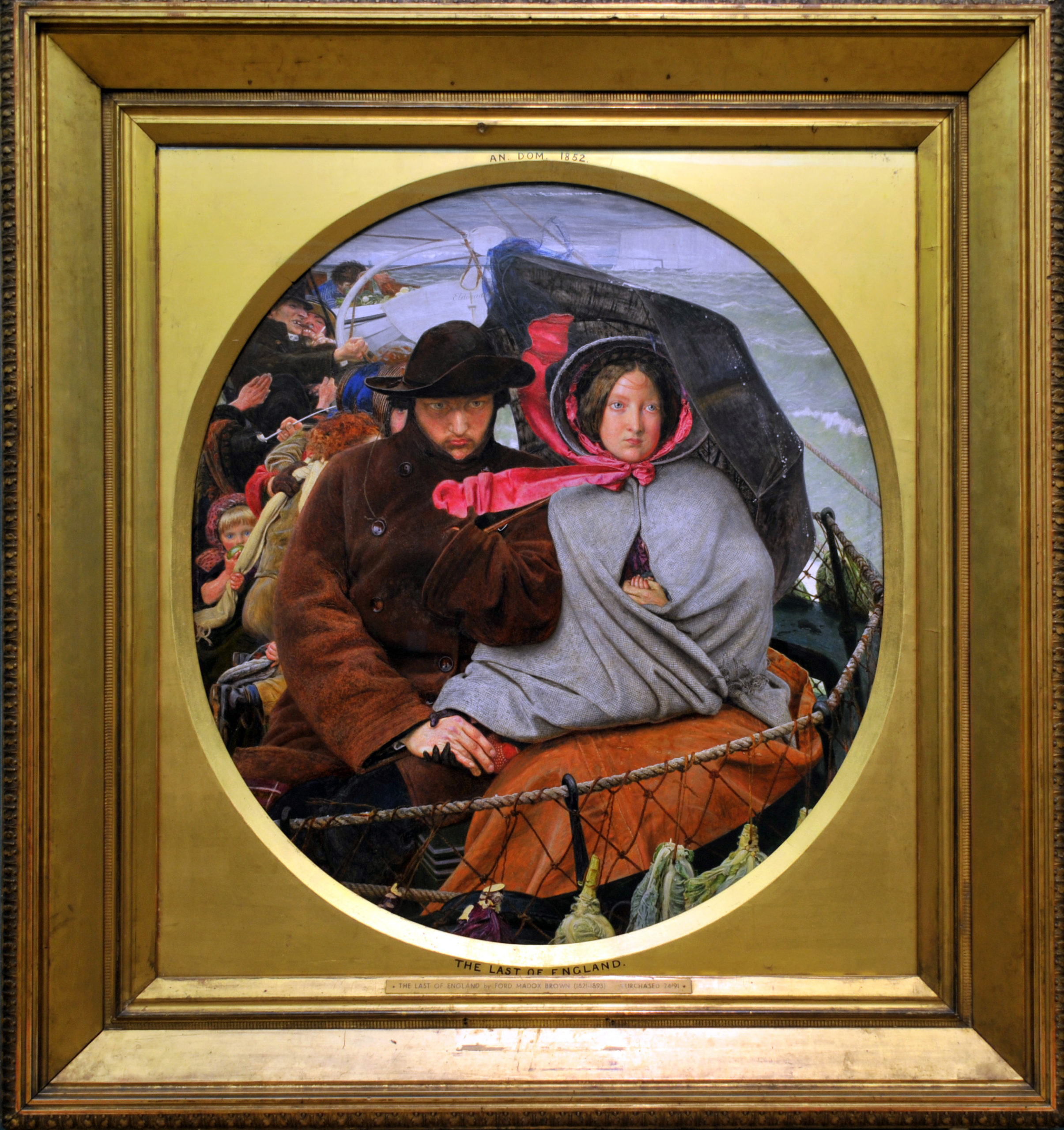
Ford Madox Brown, The Last of England, 1852–55, oil on panel, 82.5 x 75 cm (Birmingham Museum and Art Gallery, UK)
Other English artists, like Ford Madox Brown commented on those people who left England altogether in search of new opportunities in The Last of England, showing a family leaving their old life behind as they embrace the uncertainties of a future in a new place.
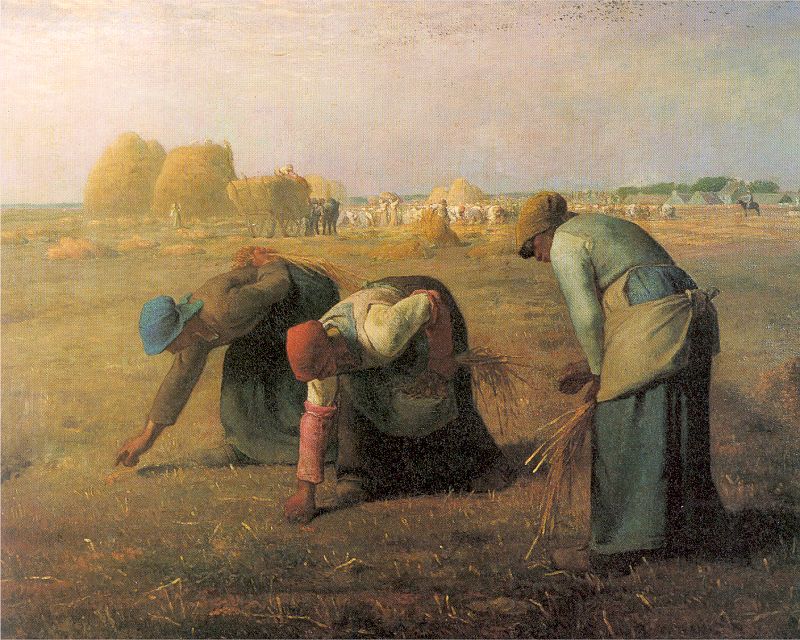
Jean-François Millet, The Gleaners, 1857 (Musée d’Orsay, Paris, photo: Liftarn, public domain)
In cities, like Paris, artists of the mid-nineteenth century became acutely aware of these changes happening all around them and reflected this new, modern world in their work. French Realist painters like Gustave Courbet and Jean-François Millet depicted country life, but through a different lens from Constable. Instead of fixing a nostalgic view of a disappearing world on canvas, Millet and Courbet brought the middle class and working class of the countryside into the Paris Salon (the official exhibitions of the Royal Academy) when they exhibited work such the Burial at Ornans and The Gleaners. These Realist painters depicted modern life with a new accuracy that many associated with an objective, almost scientific approach.
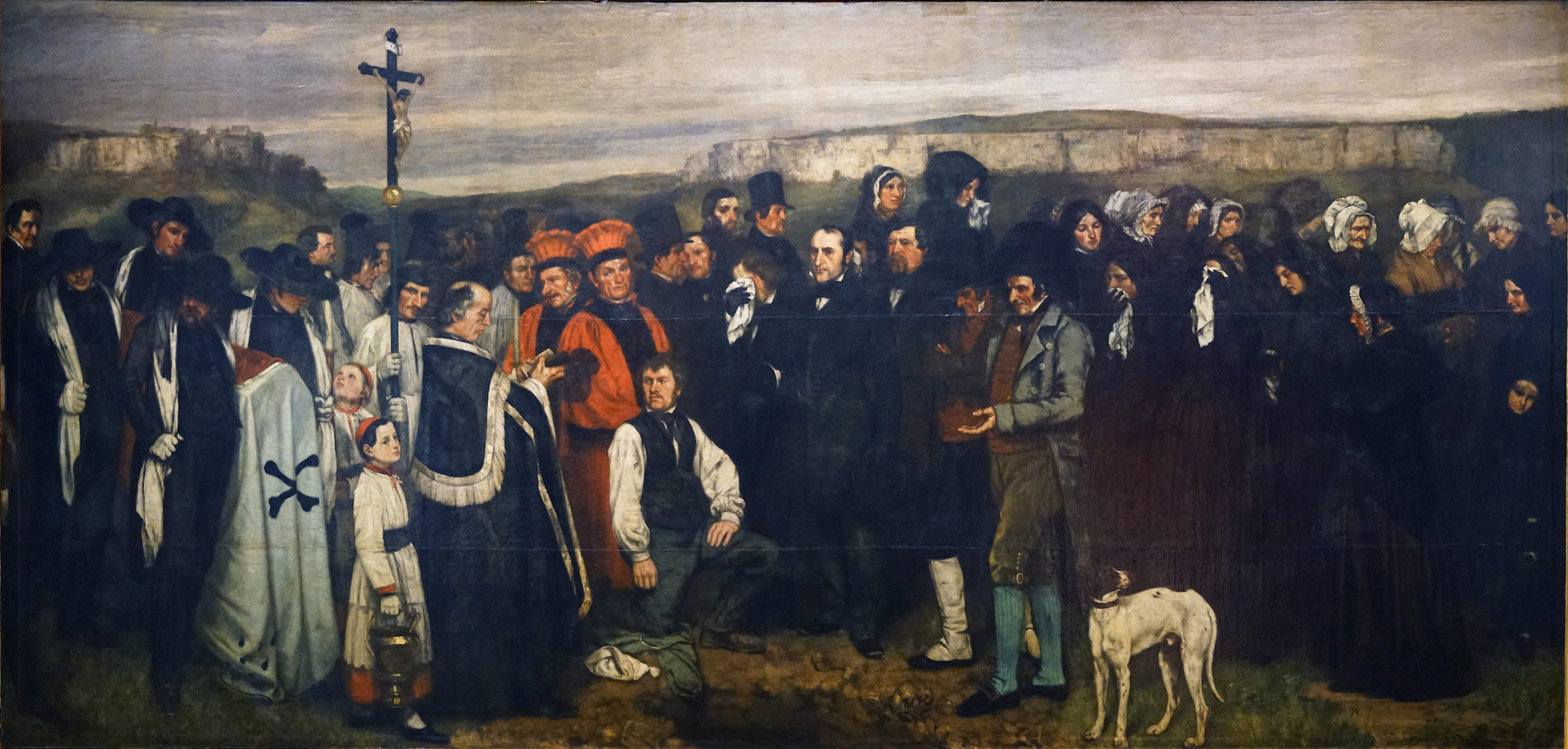
Gustave Courbet, A Burial at Ornans, begun late summer 1849, completed 1850, 124 x 260 inches, oil on canvas (Musée d’Orsay, Paris)
The Realist approach of Courbet and the others had a deep impact on later progressive artists in Paris and elsewhere. The change in subject matter advocated by the Realists, rooted in the observation of contemporary life in the French provinces, prompted artists like Édouard Manet to find new subjects as well. He turned to city life in Paris and the world of cafés, concerts, and balls. In a painting like Music in the Tuileries Gardens, discussed in the essay below, we find all the hallmarks of a whole new approach to painting in terms of both style and subject matter.
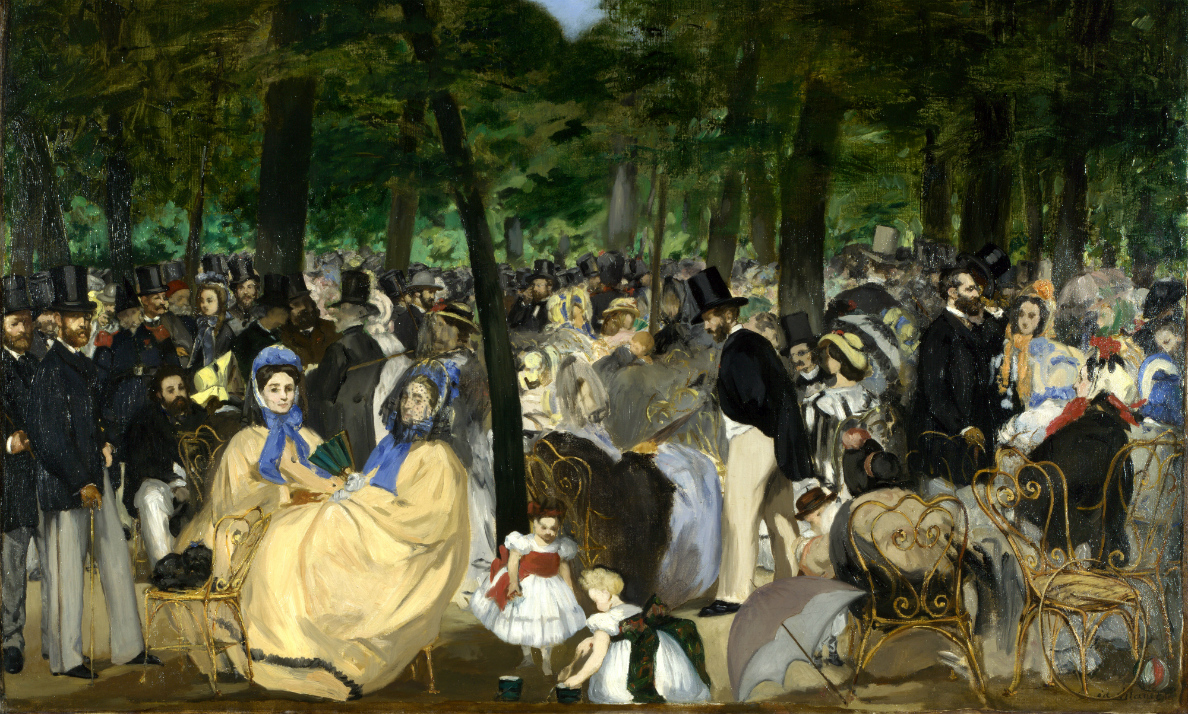
Édouard Manet, Music in the Tuileries Gardens, 1862, oil on canvas, 76.2 x 118.1 cm (The National Gallery, London)
It would be easy to think of Paris as a city only full of middle- and upper-class people of White European descent if we only looked at Music in the Tuileries Gardens, but in fact Manet’s world was a rich mix of Parisians of every class and origin. A good example of the diverse world of artists like Manet may be one of his most famous paintings, Olympia.
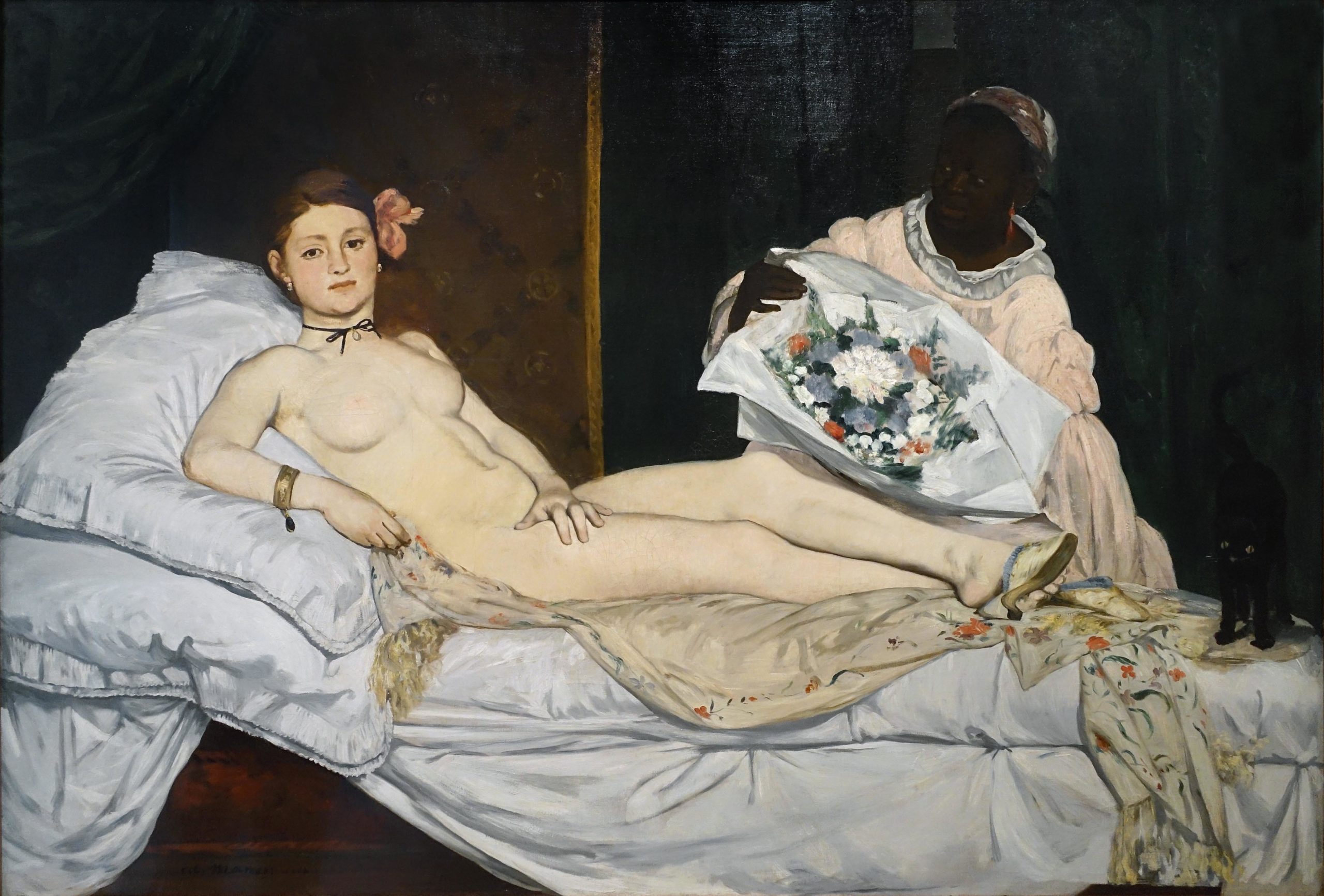
Édouard Manet, Olympia, 1863, oil on canvas, 130 x 190 cm (Musée d’Orsay, Paris; photo: Steven Zucker, CC BY-NC-SA 2.0)
While Olympia was unquestionably revolutionary in terms of its subject, style, and challenge to the traditions of French painting it is also a reminder of the journeys of many people who made Paris their home. Standing behind the model Victorine Meurent, reclining on the couch in the role of Olympia, is another model, Laure, bearing a bouquet of flowers in her role as the maid. Like Gericault’s model Joseph, in the The Raft of the Medusa, Laure was part of the larger Parisian art world that included models, merchants, studio assistants, and others.
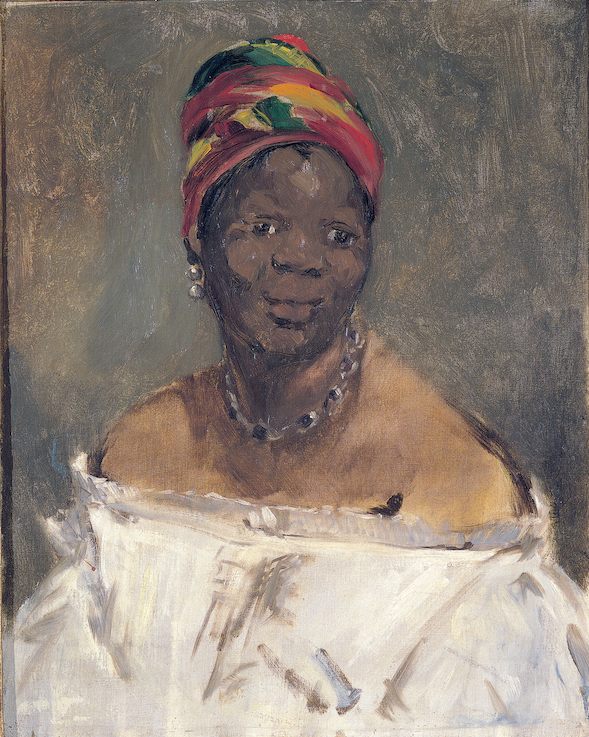
Édouard Manet, Portrait of Laure, 1863, oil on canvas (Musée d’Orsay, Paris)
After the abolition of slavery in the French colonies in 1848, people from the French Caribbean began to migrate to Paris. The small, steady stream of immigrants settled in Paris’s northern neighborhoods, where we know Laure lived, and made a living like other members of the Parisian working class, a world closely studied by art historian Denise Murrell and others. Manet painted Laure three times, each time in her calico headwrap that was emblematic of her French Caribbean culture. She appears in Children in the Tuileries Gardens, Portrait of Laure (formerly titled The Negress), and Olympia. Other artists throughout the nineteenth-century took up the subjects of working women and men from throughout the world finding a place in the life of European cities.
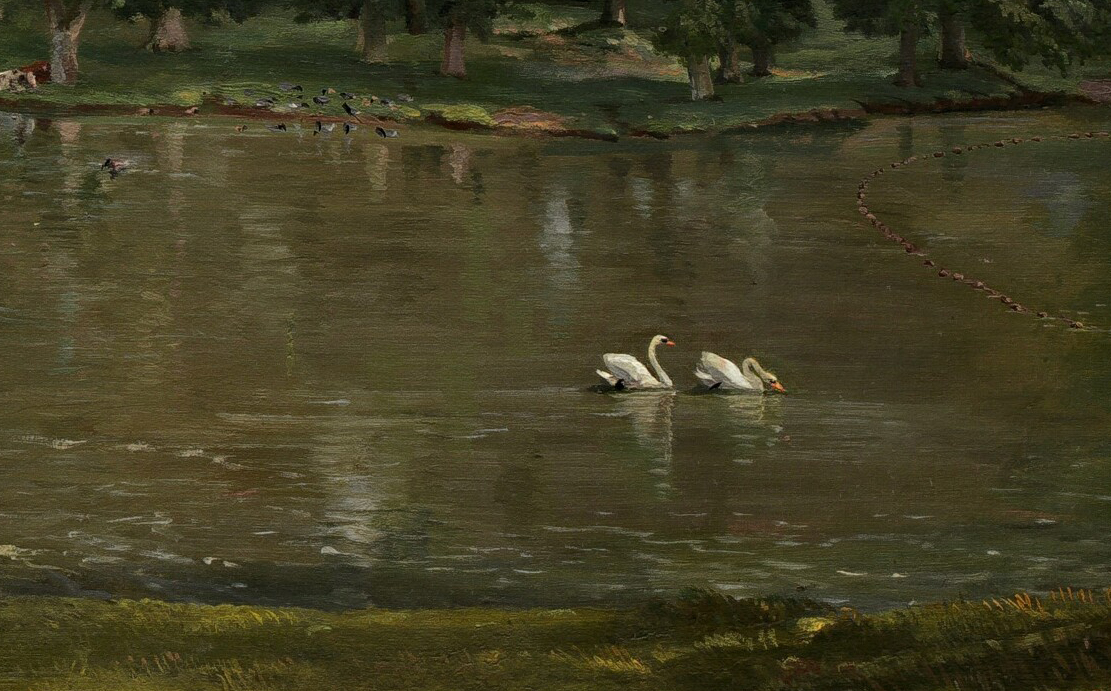
Constable and the English landscape: During the Industrial Revolution, Constable sold images of the landscape to the architects of its destruction.
Read Now >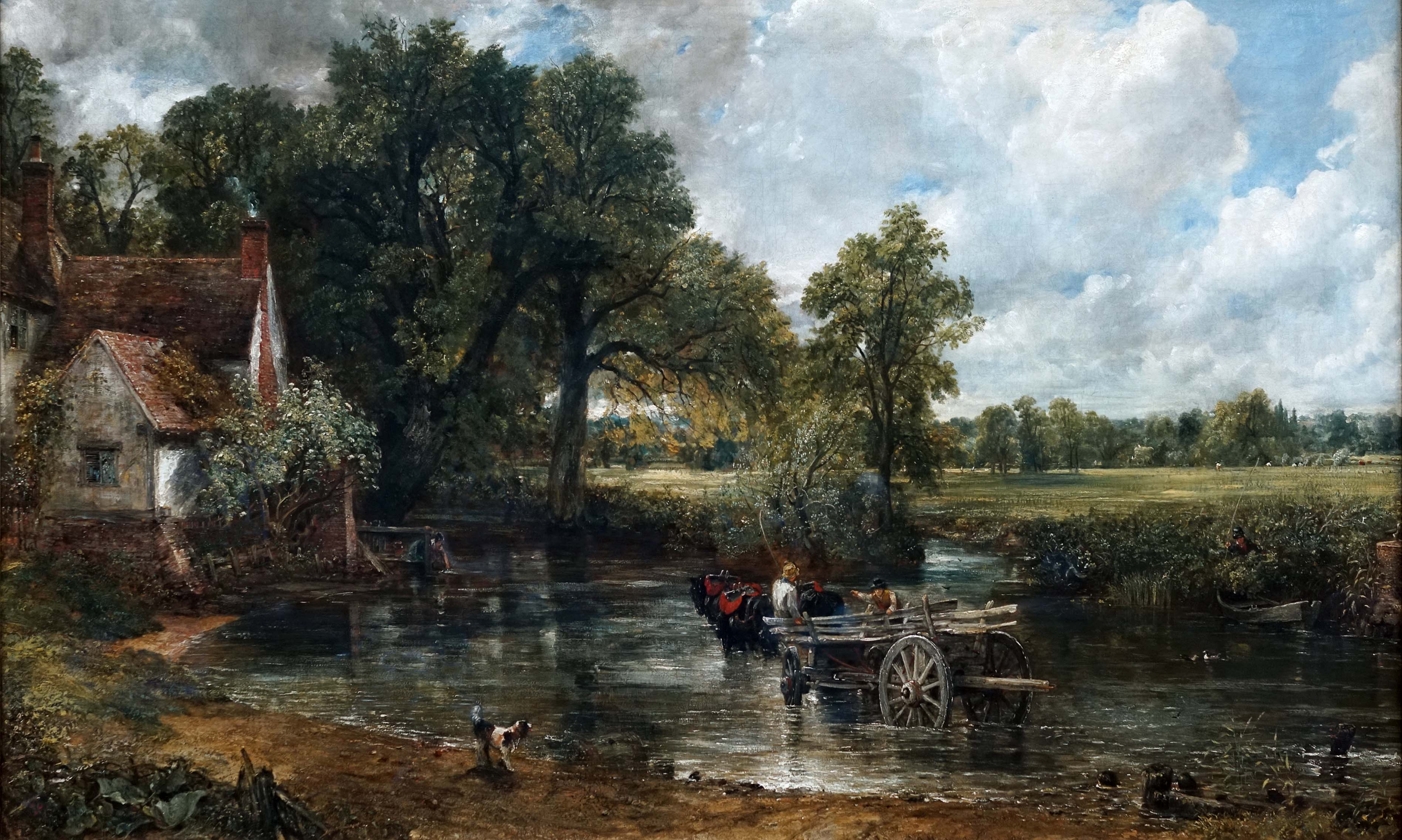
John Constable, The Hay Wain: Landscape painting was considered lowly subject, but Constable elevates them.
Read Now >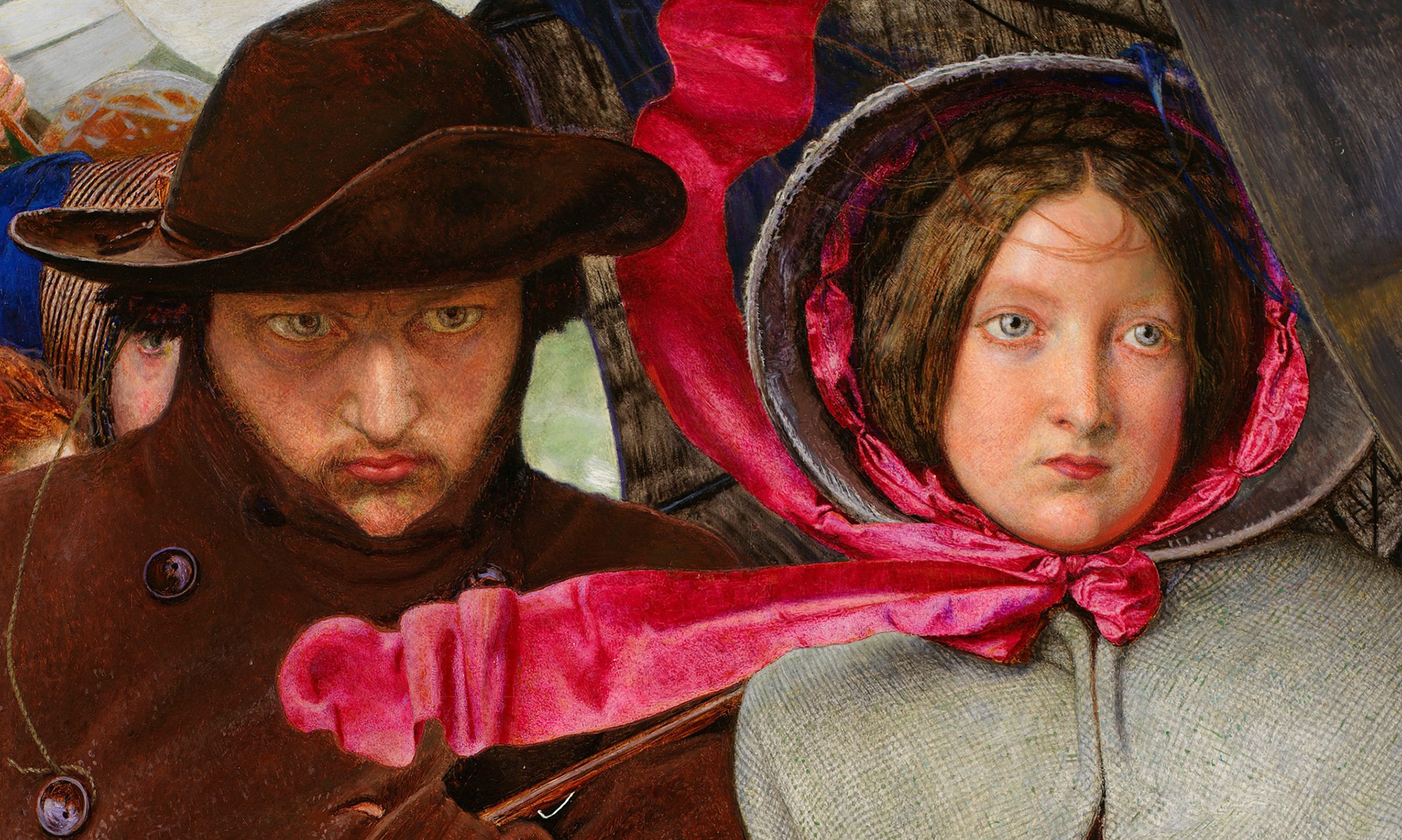
Ford Madox Brown, The Last of England: The painting is a poignant reminder of the journey made by millions of people during the 19th century.
Read Now >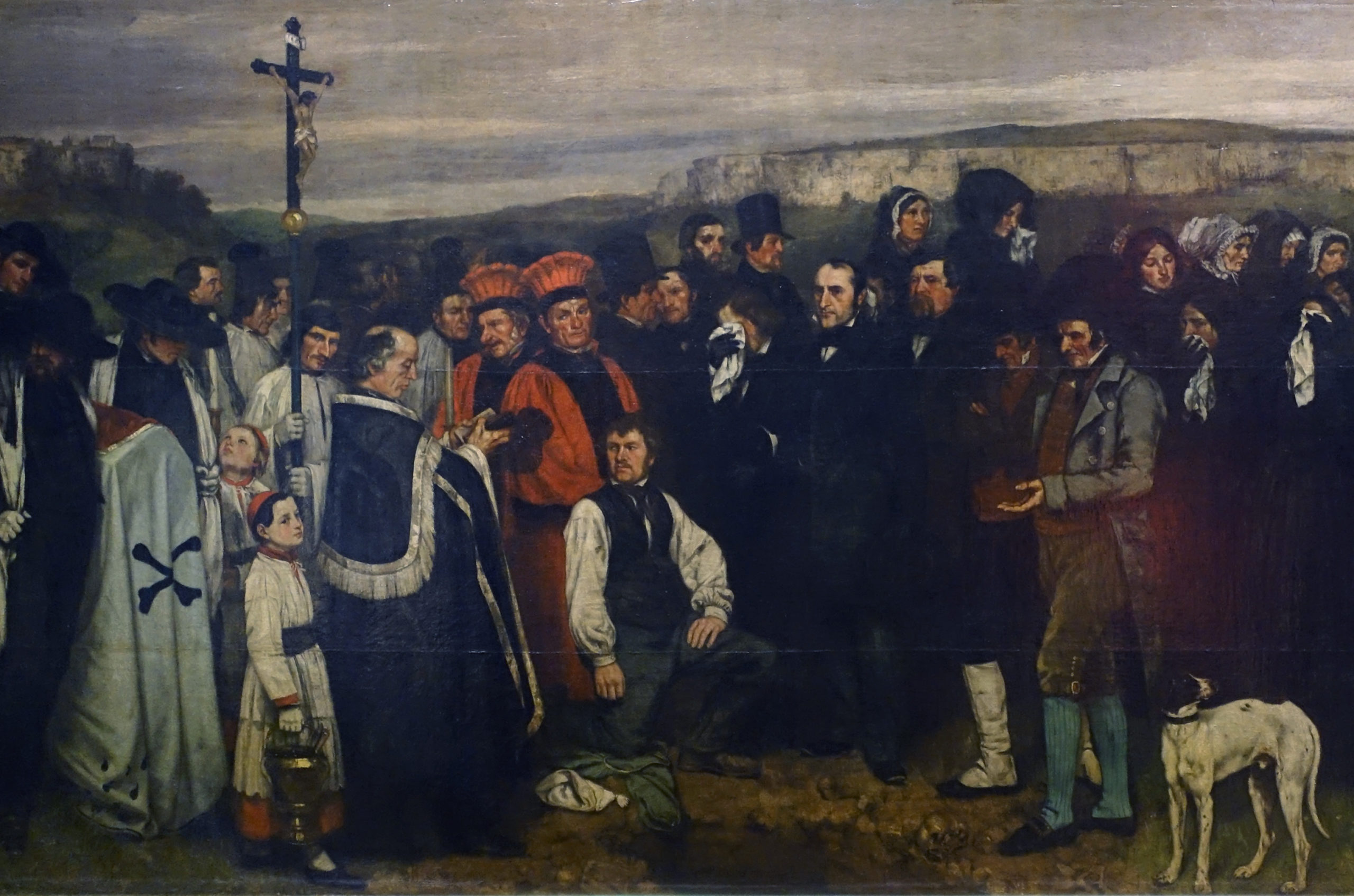
Gustave Courbet, A Burial at Ornans: Courbet shows us the middle-class citizens of a provincial town standing around a grave at a funeral.
Read Now >
Jean-François Millet, The Gleaners: Soft and lovely though it may be, this image struck fear in the hearts of urban elites when it was first exhibited.
Read Now >
Édouard Manet, Music in the Tuileries Gardens: The insults hurled at this “inappropriate” concert scene would set the tone for Manet’s controversial career.
Read Now >
Édouard Manet, Olympia: A view of Parisian life in Olympia incorporating images of two women who made up part of the population of the Parisian working class.
Read Now >/7 Completed
When Europeans visited art exhibitions in the middle decades of the nineteenth century, they could catch glimpses of a richer, more complex world than they may have seen in centuries before. While some artists looked to the traditions of past art as their response to political and social change, others embraced new subjects and offered viewers a different vision of the world. Delacroix traveled to North Africa and showed his viewers the private world of women in Algiers, while Turner looked to Africa and showed his audience a starker, if imagined, depiction of slavery. As John Constable confronted changes in the countryside he loved, he fixed that bucolic world on six-foot canvases before it disappeared for good. In the 1860s, Edouard Manet created a view of Parisian life in Olympia incorporating images of two women who made up part of the rich population of the Parisian working class. European painting was no longer confined to saints, goddesses, and kings. Instead, it had begun to reflect a new world where artists and others left for journeys to new places and returned home again or made new homes elsewhere.